The Home on the Hill - St John's Orphanage
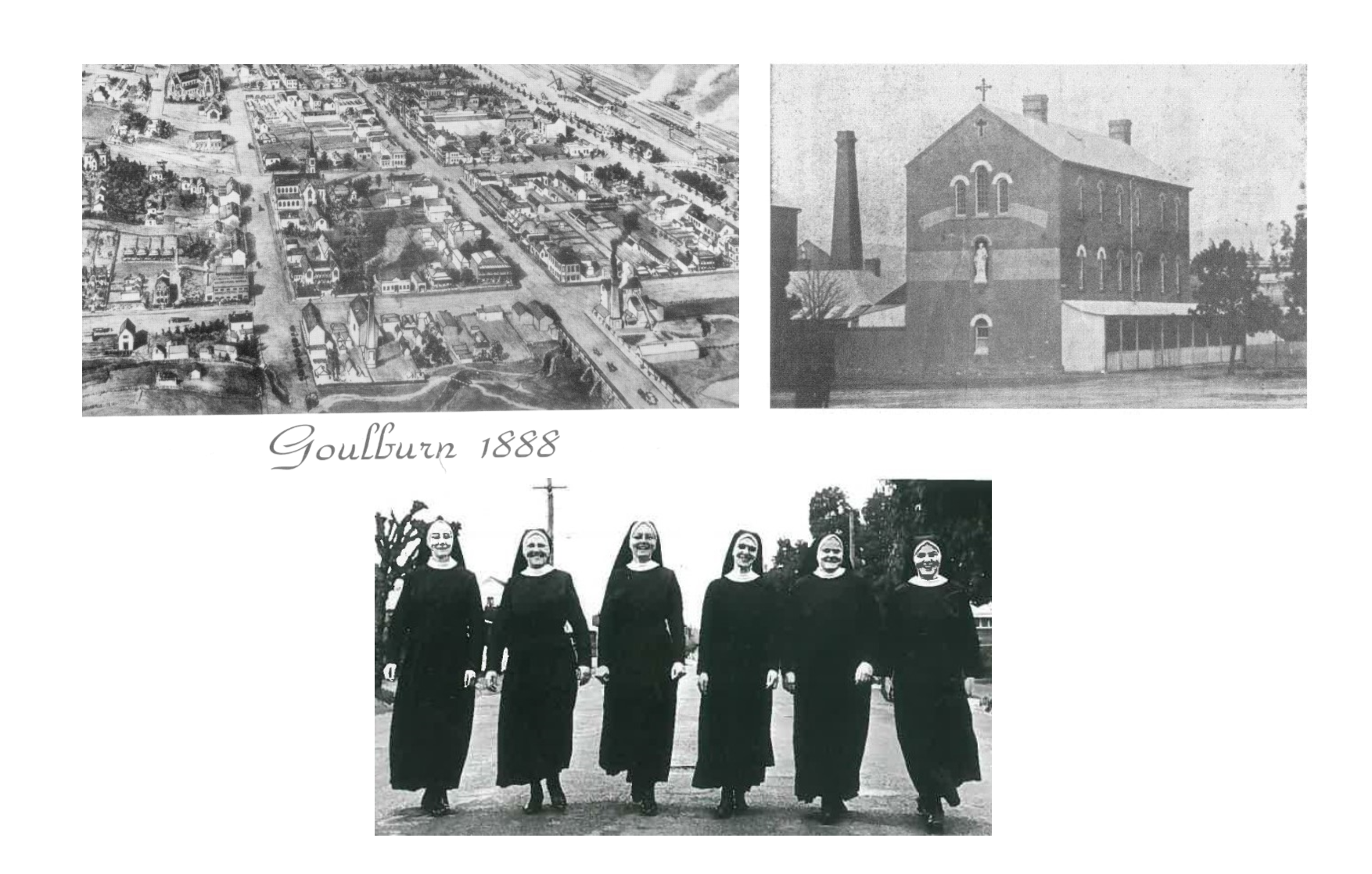
Left: This 1888 image shows the convent of mercy on the corner of Clinton and Bourke street and the old mill on the opposite side of the road. Right: The Mill was purchased in 1881, by Bishop Lanigan and it served as a girl’s orphanage and then a boys’ home before permanent orphanages were built for both at other locations. Above: Sisters at Cootamundra 1968. Image sourced from “Walking Nuns – Sisters of Mercy Goulburn Congregation Sesquicentenary” Canberra 2009.
In the Beginning – The Walking Nuns
Even an abbreviated version of the story of St John's Orphanage would not be complete without the story of the Sisters of Mercy and how they came to be running orphanages in Goulburn from 1881. Catherine Elizabeth McAuley founded the first “House of Mercy” in Ireland, Dublin in 1827 and from these humble beginnings for assisting the poor, the sick and the needy, grew a foundation which spread throughout the world. With encouragement from the Archbishop of the day, the House of Mercy was formalised as a religious community and within 12 years of its inception, it had responded to calls of assistance and moved towards organised social care. In 1859, an Australian foundation was established in Goulburn. At this time, it was considered unusual to see nuns out and about within the community and they were labelled the “walking” nuns to distinguish them from their cloistered sisters. The sisters adopted this title with pride and as a reflection of their practical approach and dedication to meeting the needs of the poor.
A core pillar of their help became the provision of housing and care for children who were orphaned or unable to be cared for by their family, and in 1881 the Hayes building, which was formerly a flour mill on the corner of Bourke and Clinton Street (opposite the convent), was purchased by Bishop Lanigan for approximately £4,500 whereupon it was renovated, blessed in 1881, and then operated by the nuns as a boarding school and orphanage for girls. When St Joseph’s Orphanage was built, the girls moved out and the building then housed orphan boys. Plans were then put in place for a home for boys and a foundation stone was laid for St John's Orphanage on 17 March, 1912. A year later, on Sunday 7 December 1913, Bishop Gallagher blessed and officially opened St John's Home for Boys. From the time of its opening in 1912, over 2000 boys passed through its doors until its closure in 1978.
St John's -The Building

Above: Three sketches of St John's Home for boys, History Goulburn collection of E.C. Manfred's architectural plans. Images reproduced with permission of Goulburn and District Historical Society. Below: The remains of what was once an elegant entrance to St John's orphanage showing a generous door, stamped metal ceilings and a curved entrance way (this image has not been modified). Image from Wikipedia.
E.C. Manfred was a prominent architect who designed a number of buildings in Goulburn, private and commercial, and those that remain are sought-after to this day. Heritage listed and solid sentinels of times past, they are a reminder of not just an architectural style and skilled workmanship, but a way of life and a social record of how people lived last century. On initial completion of St John's orphanage, the interior included provision for four nuns in charge (five at most – even when the orphanage was at capacity) to live on the premises, 2 dormitories, a chapel, ablution block, kitchen, open fireplaces with marble or brick surrounds with mantels, and everything needed to house 100 boys (which was the original estimate for maximum accommodation needs).
Over the years a number of extensions were added, including further accommodation, a hostel for older boys, numerous bungalows, and the practical addition of a working dairy. During the Second World War, due to an influx of additional boys (the total eventually reached over 200 at this time), the veranda was enclosed and used as a dormitory for a time.
After its closure as an orphanage in 1978, Youth with a Mission rented the building until 1994. It has remained empty since that time and was sold by the Catholic Church in 1999/2000 to a private owner.
Unfortunately, several fires over the last decade have left just a shell of the Federation Gothic style structure, but the bones of a once imposing building can still be seen.
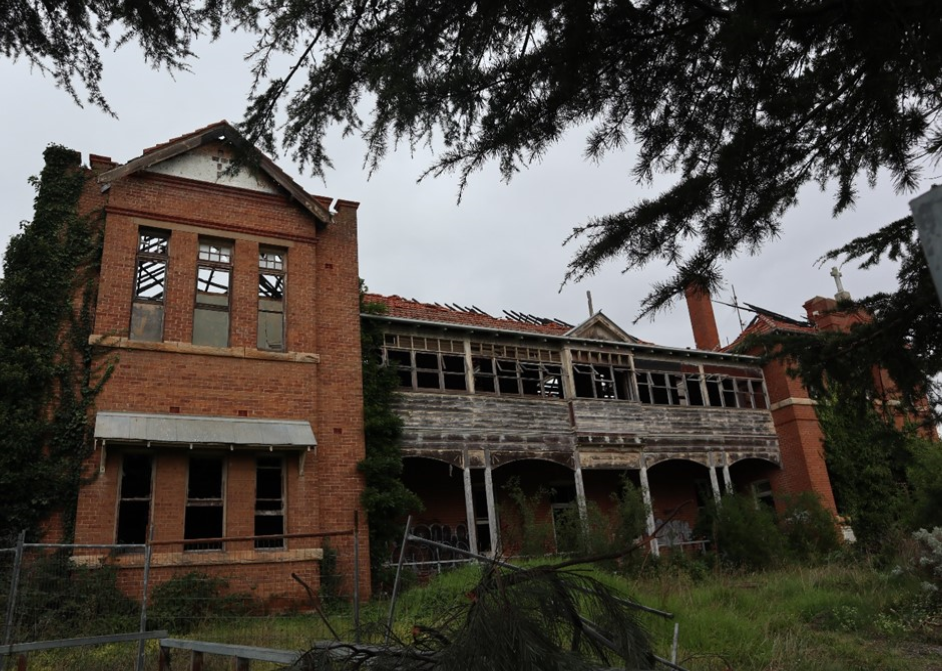
Extensive fire damage to the entire building means its eventual demolition rather than restoration. However, the bones of a once imposing building can still be seen in the remains of the structure in the above and below images. Images courtesy Goulburn Mulwaree Library 2022.

Biggles by Moonlight and other Memories
Over the years many reunions have been organised and the reminiscences reveal a slice of social history, standards, and way of life that has changed considerably in the intervening years. St John's orphanage becomes more than a building and an institution when the “old boys” meet and remember their childhood years at the orphanage. Only approximately 4 percent of the children at St John's were orphans – most had at least one parent, who for reasons of poverty, family break down, and/or social upheaval (particularly during the war years), left their children to the care of the orphanages in Goulburn. One boy recalls how he and his brothers spent 7 years at St John's when they became too much for their mother. He also remembers the magic of reading Biggles by moonlight while he was sleeping on the orphanage veranda when the dormitories were full. The following summary of anecdotes and observations are taken, in part, from his recollections published on the St John’s Orphanage for Boys memorial website:
Many of the boys experienced working in the dairy, and a turn on the milk roster meant a 5am start delivering milk from the back of a horse and cart. The milk was ladled out for each delivery at 4 pence a pint, and the horse needed no direction as it plodded on, sure of each destination.
The coveted role of altar boy included responding in Latin at mass, having an occasional surreptitious sip of altar wine, and ringing the enormous bells at the cathedral. Food was basic and not always sufficient (especially during the war years, some boys recall always being hungry), bedding had, on occasion, to be treated for lice, all clothes were communal (a numbering system was finally introduced that allowed the boys to identify and take ownership of their own underwear), and fire cracker night was eagerly anticipated.
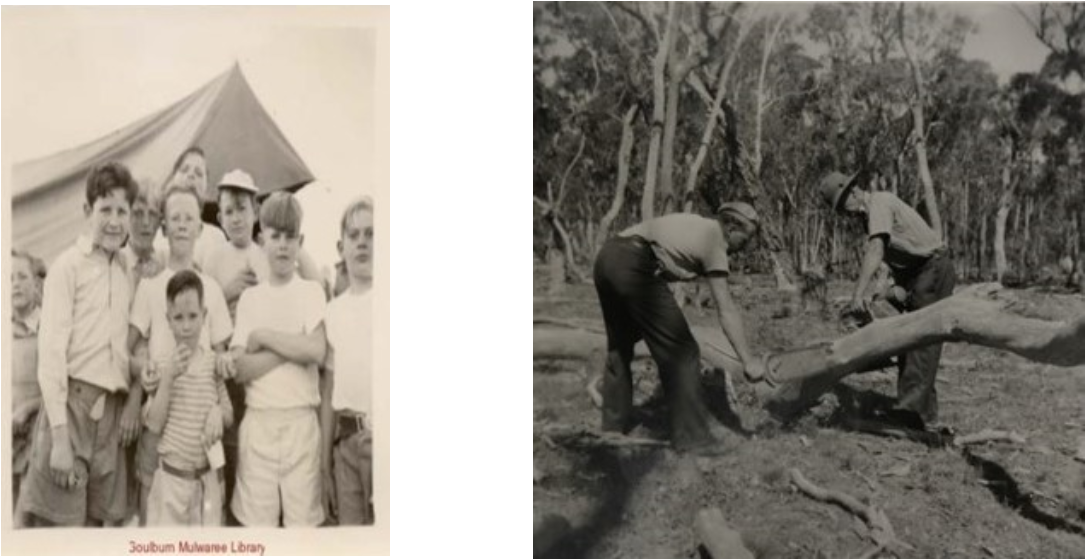
Left: Orphans Picnic c1955. Goulburn Mulwaree Library Archive. Reference No. 201666. Right: Apex Wood Drive 1951. Goulburn Mulwaree Library Archive. Ref no 1642.
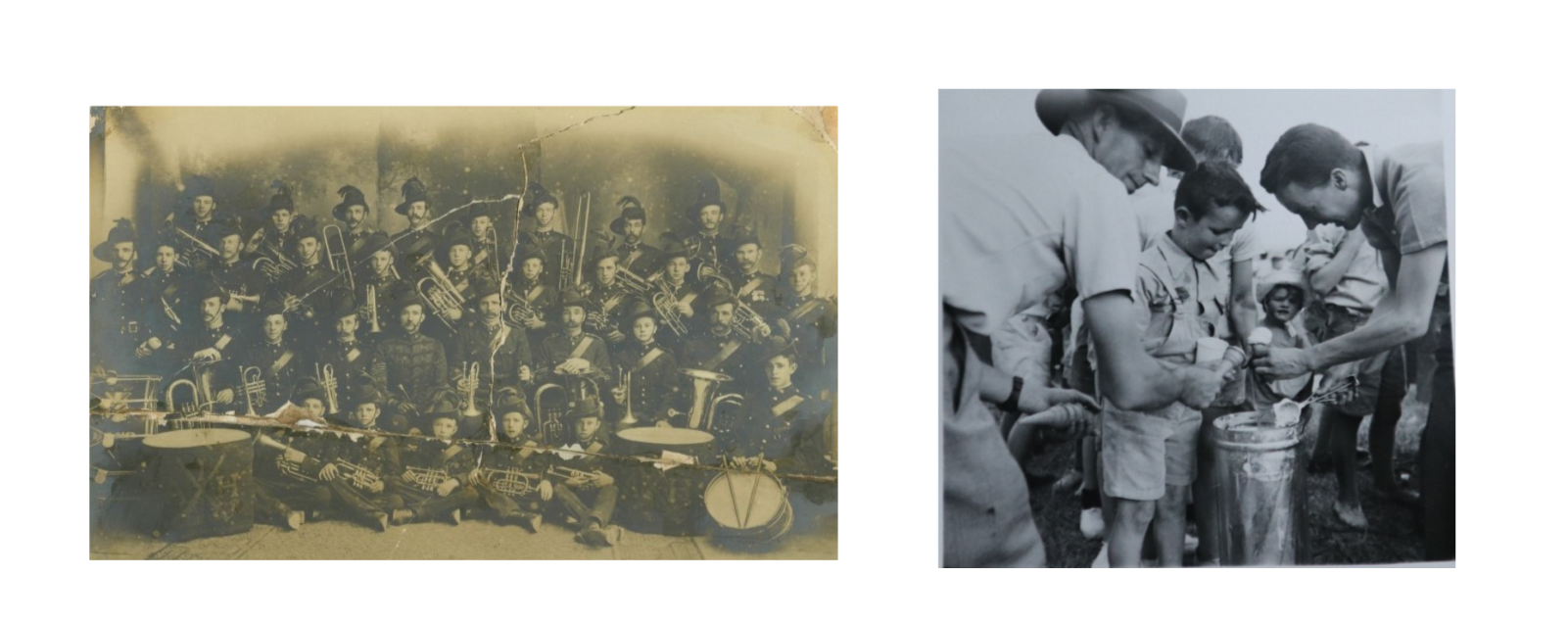
Left: The A.L.H Band led a colorful procession from St Peter's and Paul's Cathedral to St John's Orphanage on the day of its official opening and blessing. Right: Orphans picnic Goulburn Apex Club, c.1955. Goulburn Mulwaree Library archive. ref no 1664.
Community Involvement
From the start there were many community groups that contributed significantly and took an interest in the welfare of not only St John's, but all the orphanages in Goulburn. On the day of its official opening, Sunday 7 December 1913, the Goulburn Penny Post writes of the procession of cohorts, interested locals, and Catholic dignitaries being led up Auburn Street by the Australian Light Horse Band on the way to blessing and officially opening St John's. Each year the Apex Club held the orphans picnic and also did a “wood” run, cutting and collecting firewood from Goulburn properties and distributing it amongst the orphanages that relied on open fireplaces for heating. Each year, the boys would stage a concert with singing and dancing, and local women within the community would make the required costumes. Many organisations and individuals regularly donated food and clothing, and the Goodwill Club raised money annually for the orphanages and each Christmas would supply the orphans with soap, hankies, and face washers. The boys were also involved in sporting activities in the community and were known as fierce competitors. All boys were required to participate in boxing and one of their number made it to the Melbourne Olympic Boxing Team as a reserve later in his career.

This painting once adorned the wall in the dining room at St John's. It re-emerged after a 40 year disappearance and a copy is now available for old boys.
Evolution of Social Attitudes
Although the building of St John's Orphanage is no longer a monument to the past, the memories associated with this part of Goulburn’s history have been commemorated and preserved by the installation of a memorial plaque in Victoria Park in 2007. On it are listed the Goulburn orphanages and those who ran them. It is a sad but fitting reminder dedicated to the “Forgotten Australians”.

Plaque dedicated to the “Forgotten Australians”, Victoria Park. Image courtesy of Goulburn Mulwaree Library 2022.
It must be acknowledged that not all memories associated with St John's and other orphanages within Goulburn and throughout the state were happy ones. For a significant number of children it was a childhood marked by emotional, if not physical, neglect and trauma. In the 70s and 80s a growing realisation of the needs of children led to a social shift that saw children at risk moved away from the institutionalised care model with the emphasis on keeping families together where possible or placing them within foster families. It is only in the past decade, after official government investigations and invitations for unheard voices to have their say, that the full extent of the damage done has entered mainstream awareness.
Goulburn Mulwaree Library wishes to thank and acknowledge the permission given to use material from St John's Orphanage for Boys website.
Further Reading
Walking Nuns – Sisters of Mercy Goulburn Congregation Sesquicentenary [2009] – Sisters of Mercy Goulburn Congregation (Image: Walking Nuns ”Sisters at Cootamundra 1968”)
Planting the Celtic Cross [May 1997] – Rev. Brian Maher (Image: Old Orphanage, Hayes Mill, opp. Convent of Mercy 1880)
Memories of Goulburn [2013] - Heather West & Lynette Brown
Glebe Garden Goulburn [2003] – Eric Martin and Associates
Oral History Recording of Gail Favaloro's memories of her time in St Joseph's Orphanage.
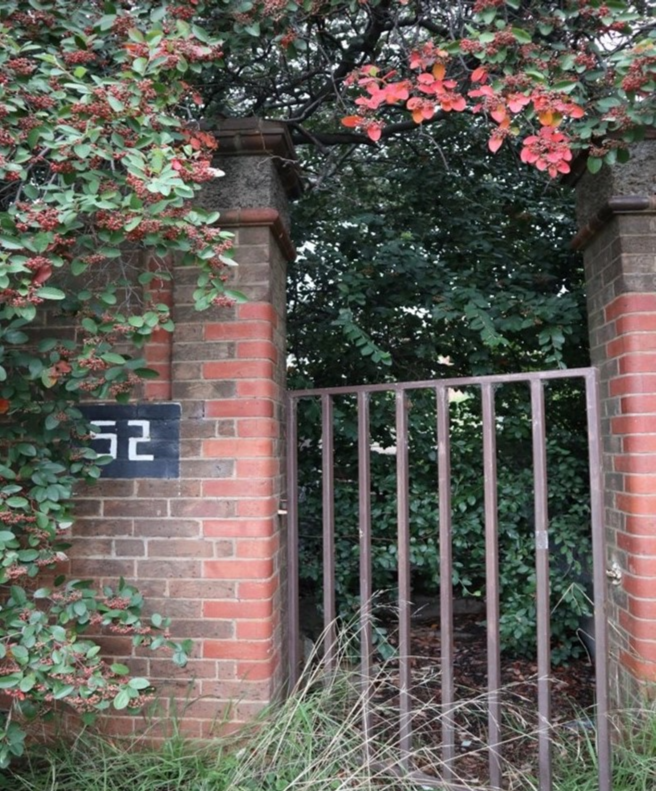
The overgrown remains of what was once a busy entrance to St John’s Orphanage. Image courtesy of Goulburn Mulwaree Library, 2022.
